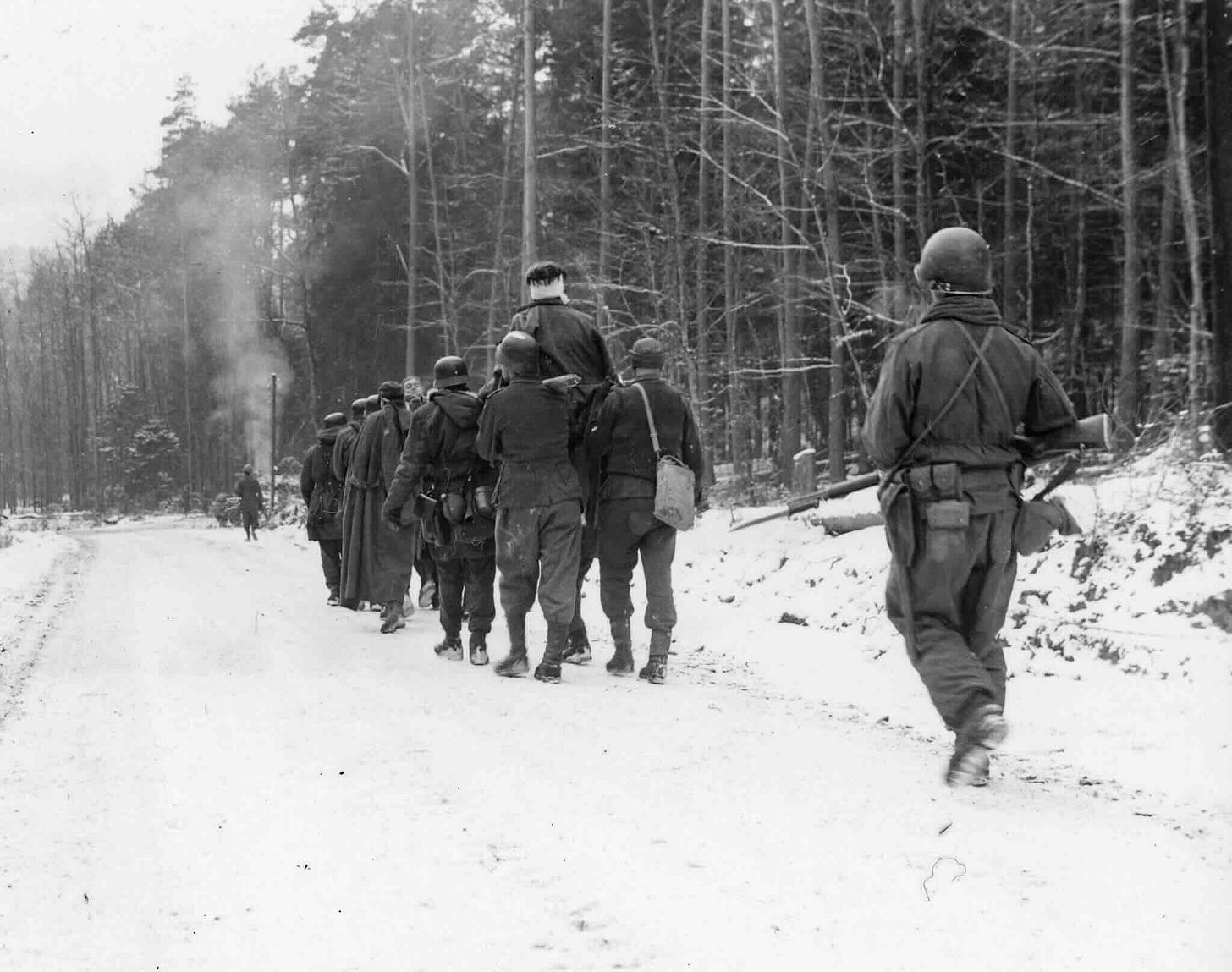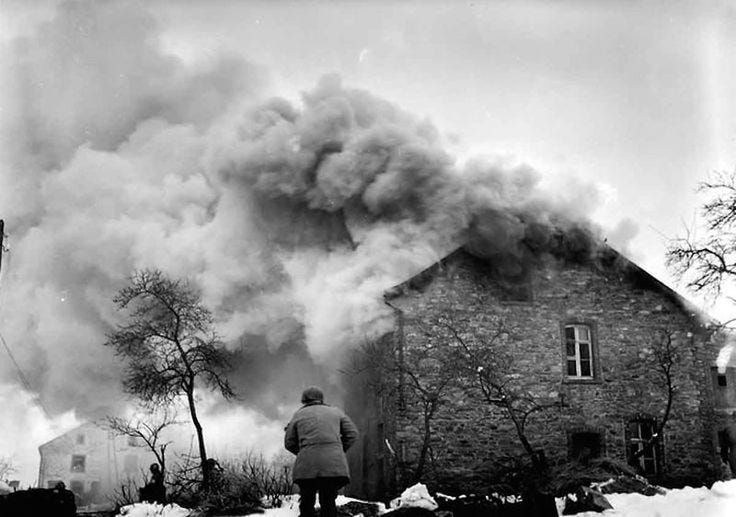Three Medal of Honor heroes
8th January 1945: Even as the battle turns in favour of the US Army, it takes courage and determination to overcome Nazi fanatics
If the 82nd Airborne Division found themselves facing second-tier troops, it was by no means the case across the whole of the battlefield. Although Allied commanders could feel reasonably confident that the tide had turned, the situation varied greatly.
For many men, facing German counter-attacks, it did not feel they were in the ascendant.
January 8th saw three different men, fighting in different locations along the front, awarded America's highest award for valor. These citations give us some idea of the intensity of the individual battles being fought on this day.
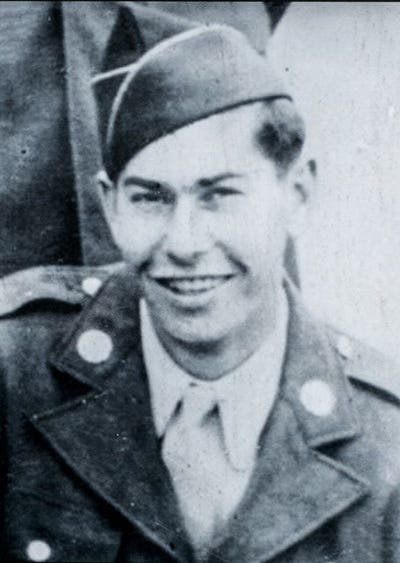
Sgt Day G. Turner, Company B, 319th Infantry, 80th Infantry Division, Dahl, Luxembourg, 8 January 1945:
He commanded a 9-man squad with the mission of holding a critical flank position. When overwhelming numbers of the enemy attacked under cover of withering artillery, mortar, and rocket fire, he withdrew his squad into a nearby house, determined to defend it to the last man.
The enemy attacked again and again and were repulsed with heavy losses. Supported by direct tank fire, they finally gained entrance, but the intrepid sergeant refused to surrender although 5 of his men were wounded and 1 was killed. He boldly flung a can of flaming oil at the first wave of attackers, dispersing them, and fought doggedly from room to room, closing with the enemy in fierce hand-to-hand encounters.
heroic, inspiring leadership, his determination and courageous devotion to duty
He hurled handgrenade for handgrenade, bayoneted 2 fanatical Germans who rushed a doorway he was defending and fought on with the enemy's weapons when his own ammunition was expended. The savage fight raged for 4 hours, and finally, when only 3 men of the defending squad were left unwounded, the enemy surrendered.
Twenty-five prisoners were taken, 11 enemy dead and a great number of wounded were counted. Sgt. Turner's valiant stand will live on as a constant inspiration to his comrades. His heroic, inspiring leadership, his determination and courageous devotion to duty exemplify the highest tradition of the military service.
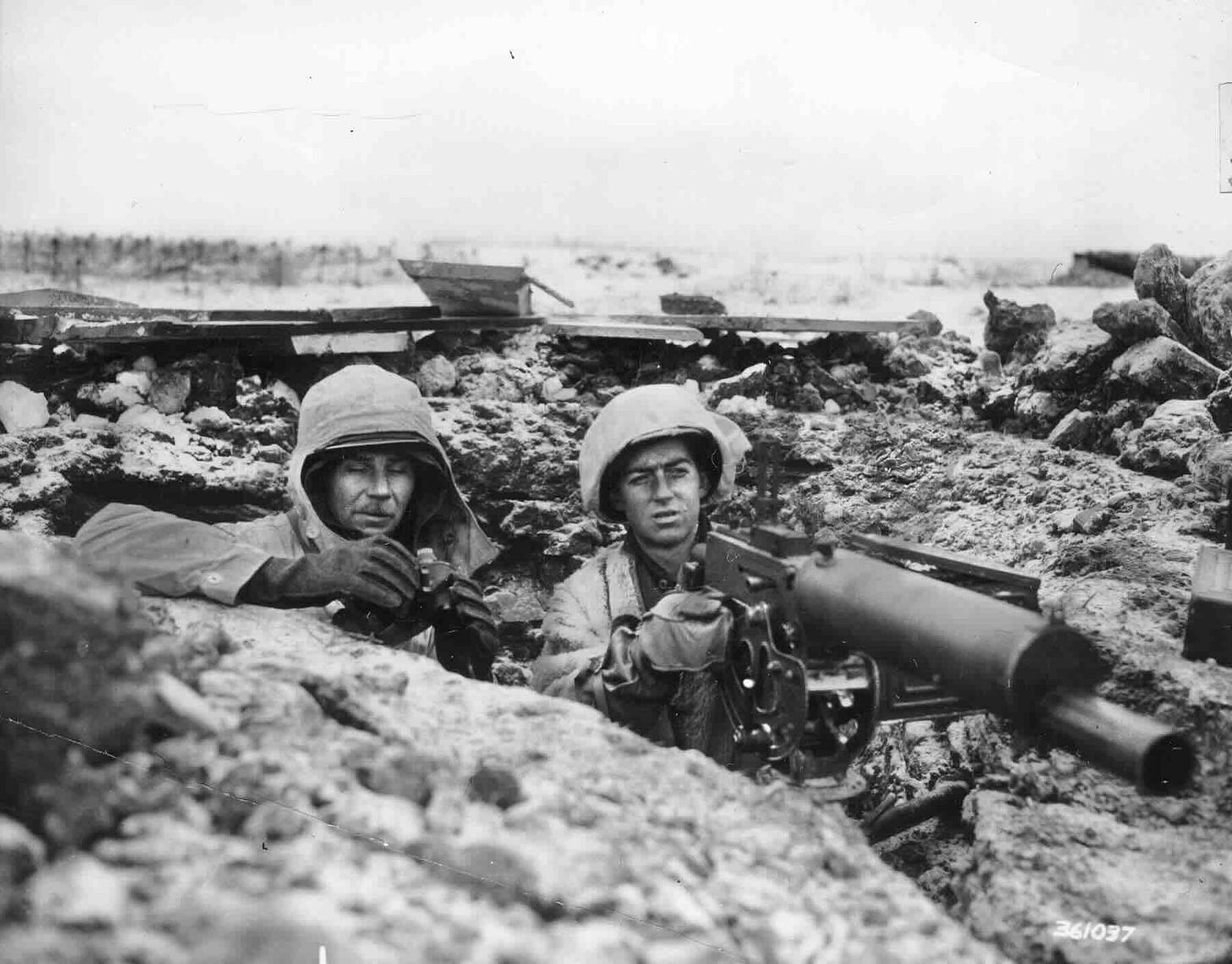
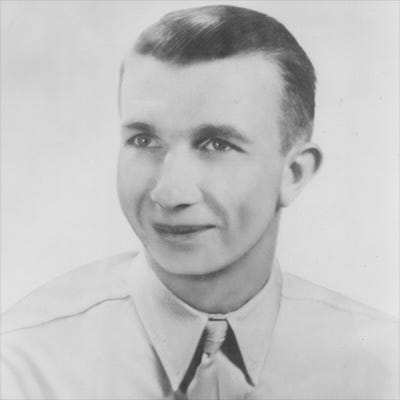
Technical Sergeant Charles F. Carey, Jr.:
Technical Sergeant Charles F. Carey, Jr., ASN: (6253699), United States Army, for conspicuous gallantry and intrepidity in action above and beyond the call of duty on January 8 and 9, 1945, while serving with the 397th Infantry Regiment, 100th Infantry Division, in action at Rimling, France.
Technical Sergeant Carey was in command of an antitank platoon when about 200 enemy infantrymen and twelve tanks attacked his battalion, overrunning part of its position. After losing his guns, Technical Sergeant Carey, acting entirely on his own initiative, organized a patrol and rescued two of his squads from a threatened sector, evacuating those who had been wounded.
He organized a second patrol and advanced against an enemy-held house from which vicious fire issued, preventing the free movement of our troops. Covered by fire from his patrol, he approached the house, killed two snipers with his rifle, and threw a grenade in the door. He entered alone and a few minutes later emerged with 16 prisoners. Acting on information he furnished, the American forces were able to capture an additional 41 Germans in adjacent houses.
Carey … an inspiring example for his comrades and materially helped his battalion to withstand the German onslaught.
He assembled another patrol, and, under covering fire, moved to within a few yards of an enemy tank and damaged it with a rocket. As the crew attempted to leave their burning vehicle, he calmly shot them with his rifle, killing three and wounding a fourth.
Early in the morning of 9 January, German infantry moved into the western part of the town and encircled a house in which Technical Sergeant Carey had previously posted a squad. Four of the group escaped to the attic. By maneuvering an old staircase against the building, Technical Sergeant Carey was able to rescue these men. Later that day, when attempting to reach an outpost, he was struck down by sniper fire.
The fearless and aggressive leadership of Technical Sergeant Carey, his courage in the face of heavy fire from superior enemy forces, provided an inspiring example for his comrades and materially helped his battalion to withstand the German onslaught.

Technical Sergeant Russell E. Dunham, Company I, 30th Infantry, 3d Infantry Division:
For conspicuous gallantry and intrepidity at risk of life above and beyond the call of duty.
At about 1430 hours on 8 January 1945, during an attack on Hill 616, near Kayserberg, France, T/Sgt. Dunham single-handedly assaulted 3 enemy machine guns. Wearing a white robe made of a mattress cover, carrying 12 carbine magazines and with a dozen hand grenades snagged in his belt, suspenders, and buttonholes, T/Sgt. Dunham advanced in the attack up a snow-covered hill under fire from 2 machine guns and supporting riflemen.
His platoon 35 yards behind him, T/Sgt. Dunham crawled 75 yards under heavy direct fire toward the timbered emplacement shielding the left machine gun. As he jumped to his feet 10 yards from the gun and charged forward, machine gun fire tore through his camouflage robe and a rifle bullet seared a 10-inch gash across his back sending him spinning 15 yards downhill into the snow. When the indomitable sergeant sprang to his feet to renew his 1-man assault, a German egg grenade landed beside him. He kicked it aside, and as it exploded 5 yards away, shot and killed the German machine gunner and assistant gunner. His carbine empty, he jumped into the emplacement and hauled out the third member of the gun crew by the collar.
Dunham, despite a painful wound, spearheaded a spectacular and successful diversionary attack.
Although his back wound was causing him excruciating pain and blood was seeping through his white coat, T/Sgt. Dunham proceeded 50 yards through a storm of automatic and rifle fire to attack the second machine gun. Twenty-five yards from the emplacement he hurled 2 grenades, destroying the gun and its crew; then fired down into the supporting foxholes with his carbine dispatching and dispersing the enemy riflemen.
Although his coat was so thoroughly blood-soaked that he was a conspicuous target against the white landscape, T/Sgt. Dunham again advanced ahead of his platoon in an assault on enemy positions farther up the hill. Coming under machinegun fire from 65 yards to his front, while rifle grenades exploded 10 yards from his position, he hit the ground and crawled forward.
At 15 yards range, he jumped to his feet, staggered a few paces toward the timbered machinegun emplacement and killed the crew with hand grenades. An enemy rifleman fired at point-blank range but missed him. After killing the rifleman, T/Sgt. Dunham drove others from their foxholes with grenades and carbine fire.
Killing 9 Germans - wounding 7 and capturing 2 - firing about 175 rounds of carbine ammunition, and expending 11 grenades, T/Sgt. Dunham, despite a painful wound, spearheaded a spectacular and successful diversionary attack.
Only Russell E. Dunham survived the war and lived to die in his sleep aged 89.
